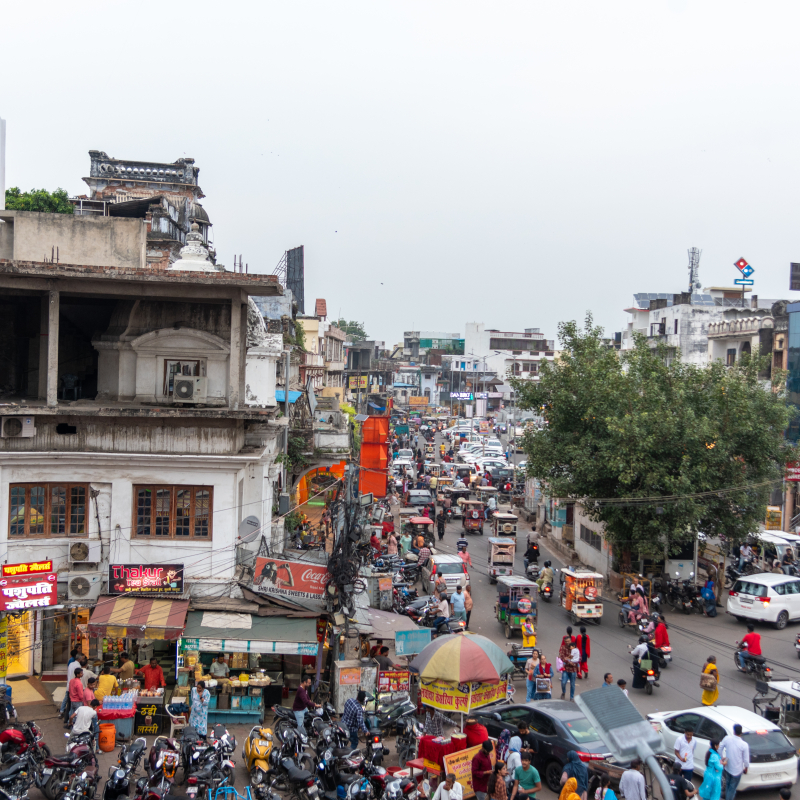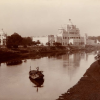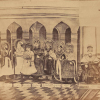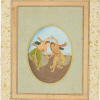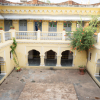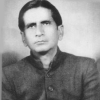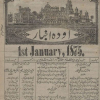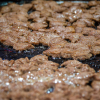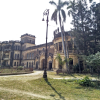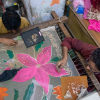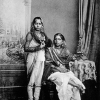By mid-morning, Lucknow’s streets are already teeming with life. Shopkeepers call out to customers, hawkers set up their stalls, and pheriwalas (travelling salesmen) offer bags and sunglasses to passersby. In one corner, large shops are stacked with freshly made snacks, while pushcarts overflow with the season’s freshest produce. Rickshaw-pullers navigate through the crowd, and pedestrians brush past each other in a constant rhythm. A walk through Aminabad, one of the city’s busiest markets, is not for the fainthearted, but it remains one of the best ways to experience Lucknow.
For those who prefer a gentler introduction to the city, Hazratganj offers a stark contrast. Just a short distance from the cacophony of Aminabad, it stands at the crossroads of old and new Lucknow. Symmetrical buildings, colonial facades and quaint coffee shops create a setting reminiscent of European high streets. Between these two contrasting worlds lie dozens of vibrant markets, each offering a glimpse into the city’s culture, heritage and history.
A City Built Around Its Markets
Like every great city, Lucknow thrives in its bazaars. These markets come in many forms—wholesale and retail, daily and weekly, seasonal and permanent, upscale and modest. Long before it became a Nawabi bastion in the eighteenth century, Lucknow was a marketplace.
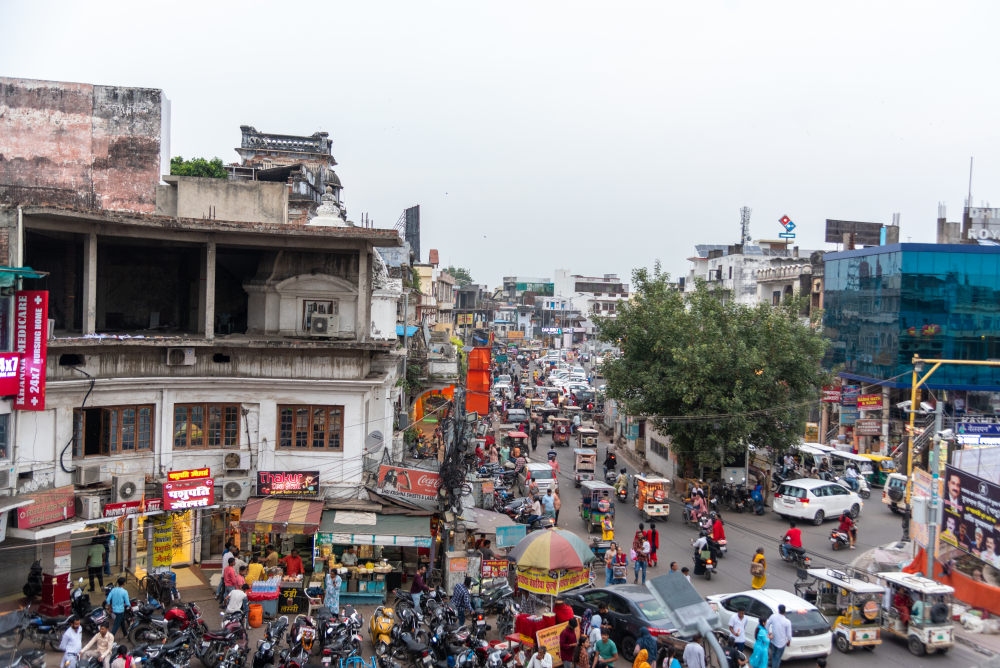
From Qaiserbagh Chauraha to Aminabad. (Picture Credits: Monis Khan)
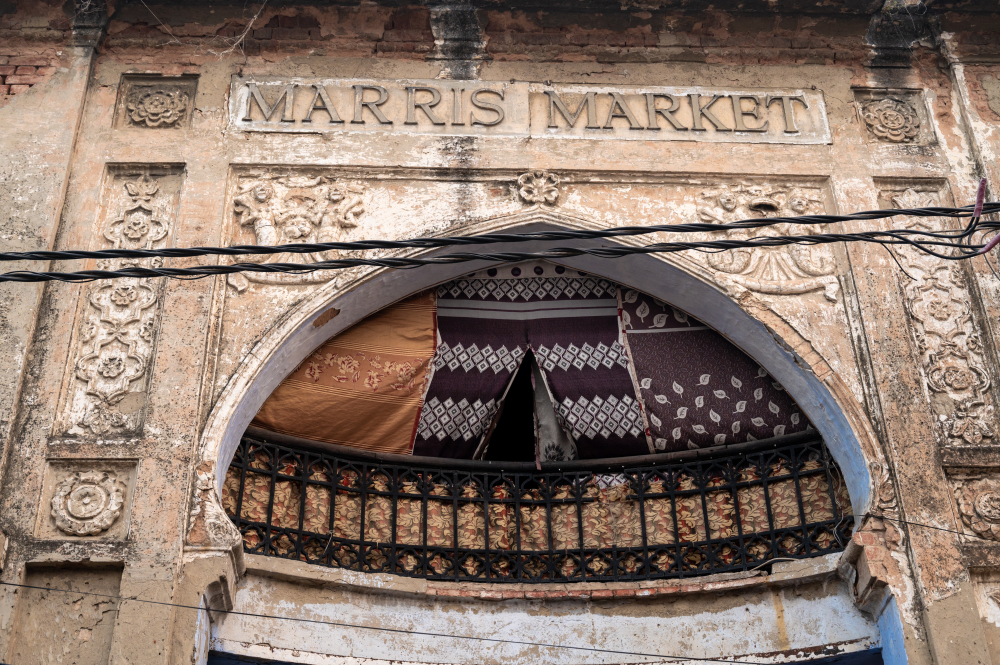
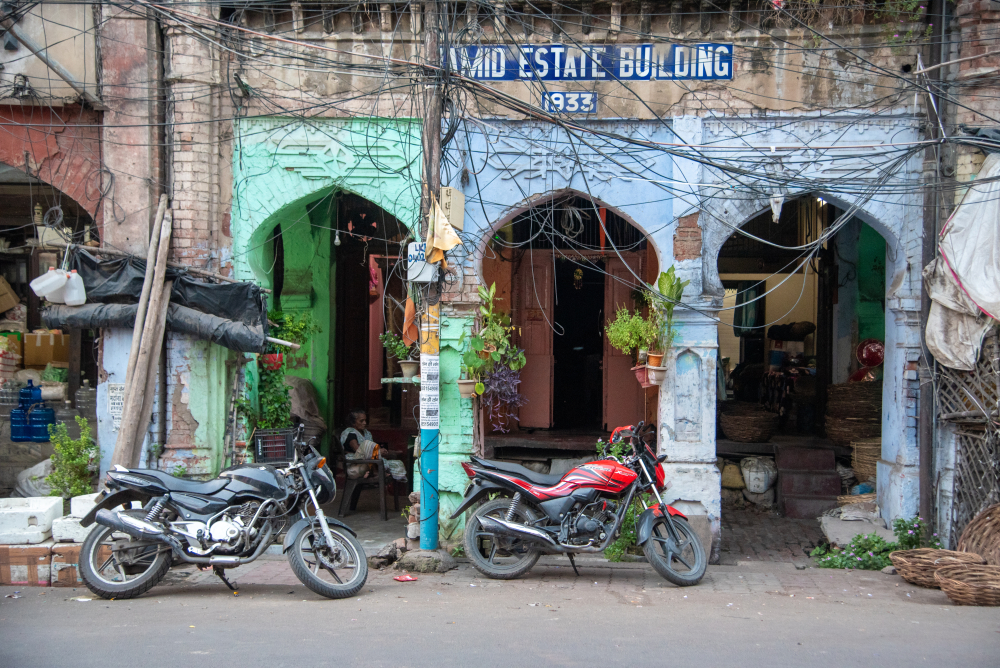
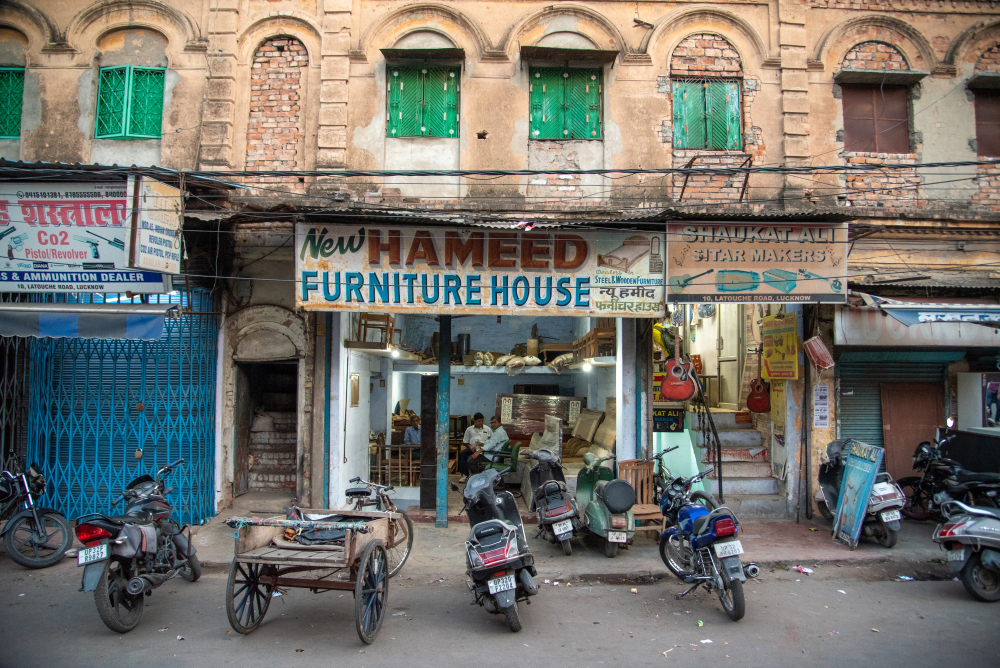
Glimpses of Lucknow’s historic markets. (Pictures Credits: Monis Khan)
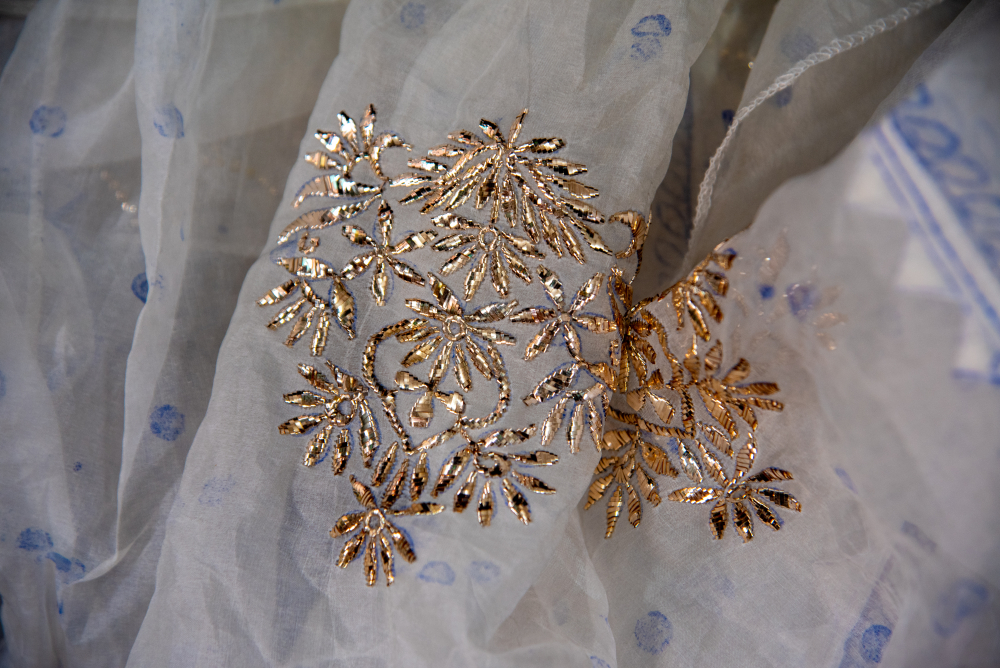
Zardozi work. (Picture Credits: Monis Khan)
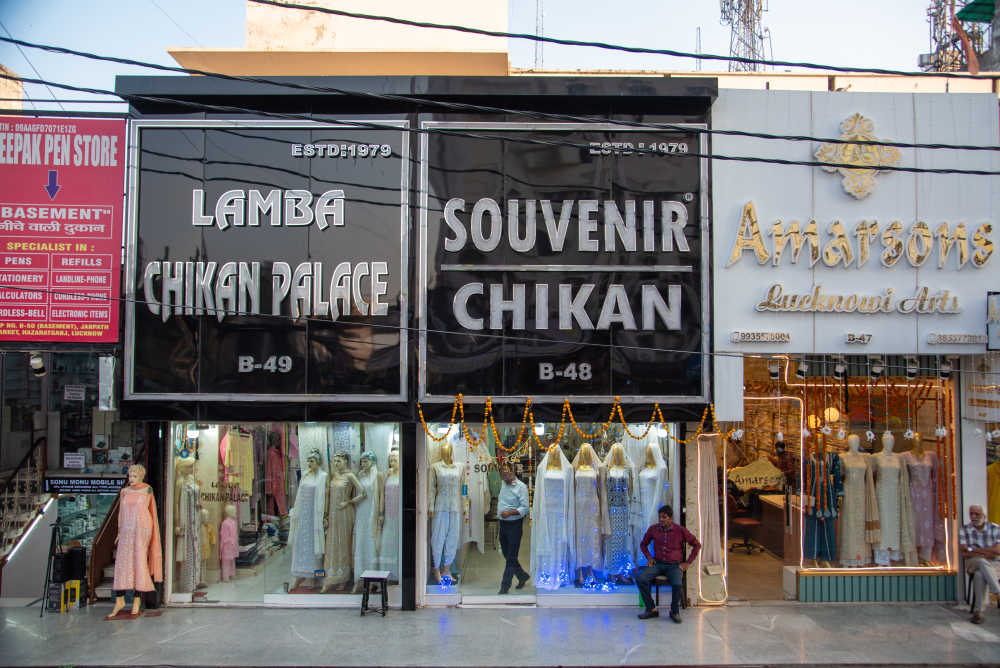
From the stalls of Aminabad to designer ateliers, chikankari threads tradition into every fold of fabric. (Picture Credits: Monis Khan)
Serving as a granary under the Mughal Empire. Lucknow’s ideal location attracted traders and merchants from Bengal, Bihar and Delhi, shaping its evolution into a bustling commercial hub. Lucknow’s transformation accelerated with the shifting of the capital from Faizabad (now Ayodhya). Nawab Asaf-ud-Daula envisioned the city as an example of grandeur and elegance. Planners and architects were invited to shape this vision. Majestic mansions and palatial residences were constructed along the banks of the Gomti River. Inspired by modern capitals, the city was designed with wide avenues, expansive baghs (gardens) and ample open spaces. Integral to this design were bustling marketplaces, from Chowk in the city’s heart to Nakhas and Aminabad, each built not just to serve daily needs but also to showcase the finest craftsmanship.
Author Mehru Jaffer notes that Asaf-ud-Daula saw Lucknow as a poem, with its bazaars forming the most ornate verses. Just as he invited people from all walks of life to settle in his capital, he encouraged artisans from across the country to establish themselves in its markets. Over time, Lucknow became synonymous with exquisite craftsmanship. The markets were filled with the finest zardozi (gold and silver embroidery), chikankari (delicate embroidery work), ittar (natural perfume), and bone carving objects, which rivalled the intricacy of ivory.
In her book A Shadow of the Past, Jaffer describes how the Nawab would often visit Chowk Bazaar just to hear the rhythmic beating of silver being crafted into warq—thin sheets used to decorate sweets. The sound, for him, was as enchanting as the artistry itself.
Bazaars of the Old City
Predating the Nawabs, Chowk remains the heart of Lucknow’s old city. The word chowk translates to ‘intersection’, but the leisurely Lucknowwallahs never found it necessary to name the market beyond that. It is spread across a large area, interspersed with residential complexes, inns, banks, post offices and the historic Kotwali. The market’s oldest landmark, Akbari Darwaza, has stood since the reign of Emperor Akbar. The second major landmark, Gol Darwaza, built during Asaf-ud-Daula’s time, reflects Nawabi architectural influences with its arches and domes.
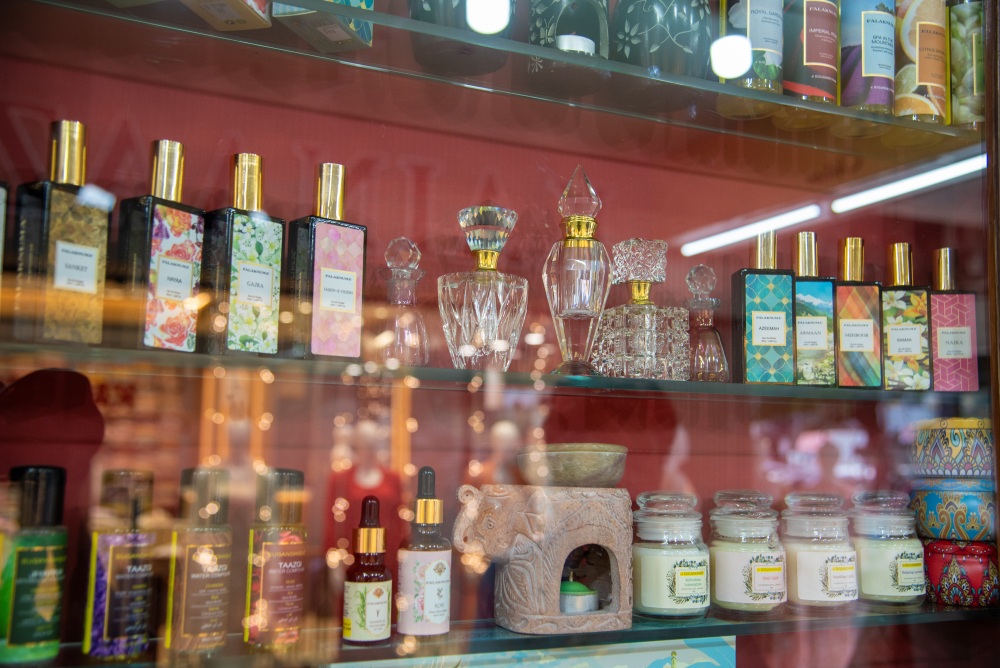
Ittar shops in Old Lucknow. (Picture Credits: Monis Khan)
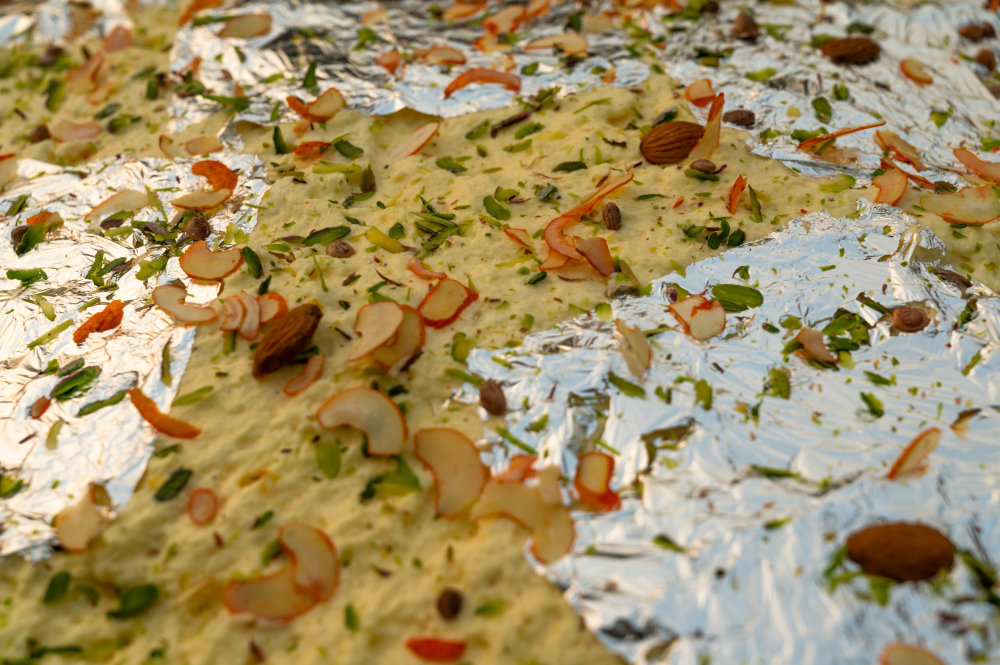
Nimish or makhan malai. (Picture Credits: Monis Khan)
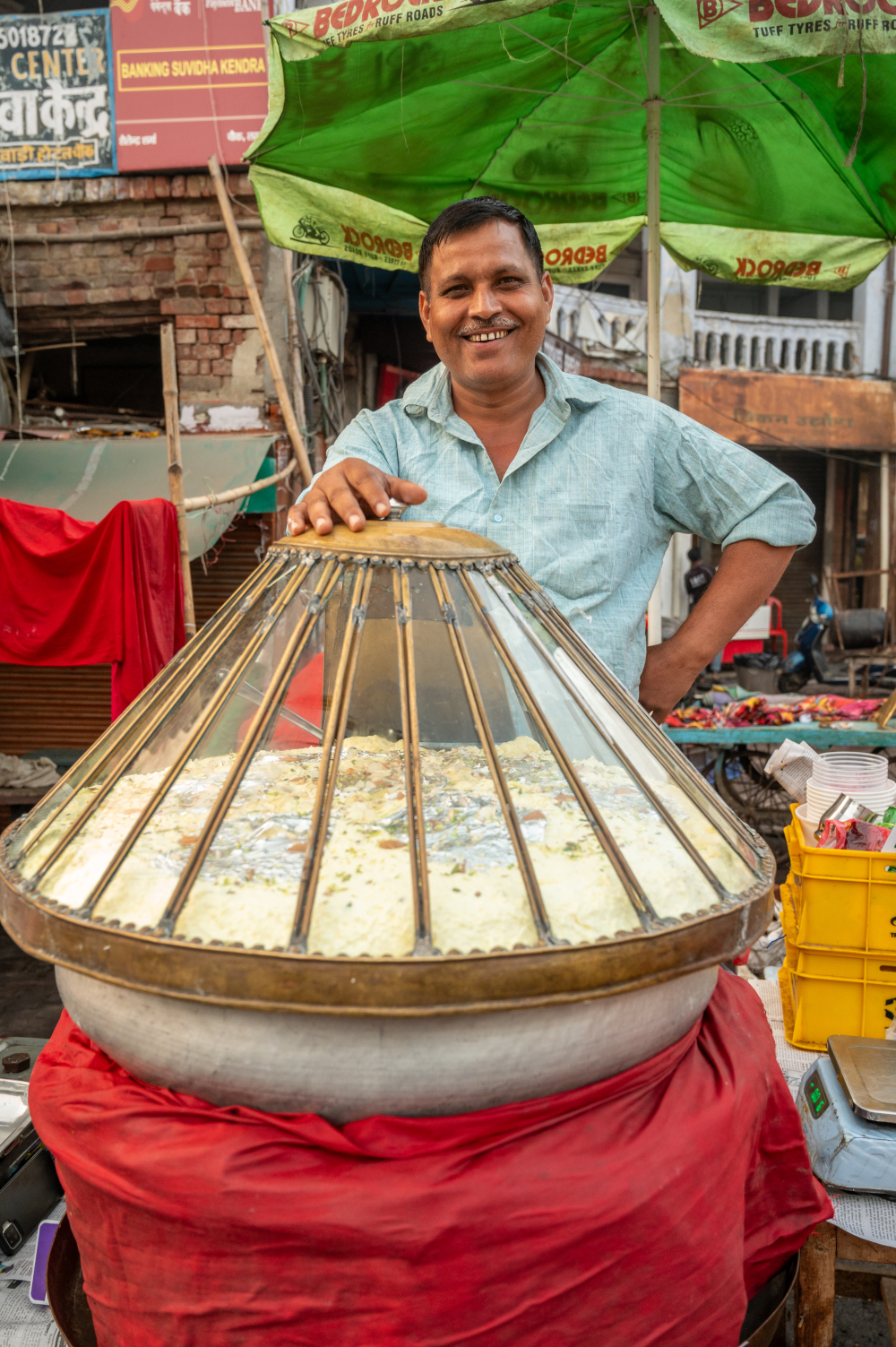
Nimish or makhan malai. (Picture Credits: Monis Khan)
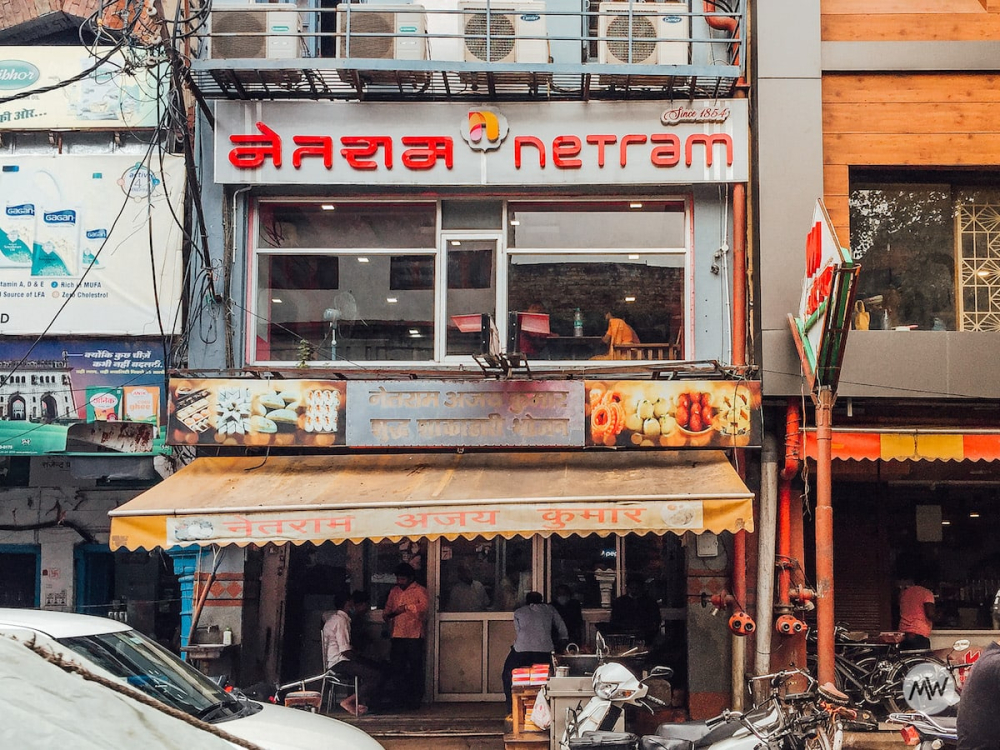
Netram is known for its khasta and sweets. (Picture Credits: Monis Khan)
Once home to flower vendors, silversmiths, bangle sellers and perfumers, Chowk has evolved into a marketplace catering largely to the middle class. Yet, its old-world charm remains. Traditional establishments like Shree Lassi, Ram Asrey, Izhaarsons and Lal Behari Tandon continue to attract visitors. During winter, the market reaches its peak raunak (bustling charm) when malai makhan vendors set up stalls at Gol Darwaza, drawing crowds from across the city eager to sample the legendary dessert.
If Chowk is Lucknow’s historic core, Aminabad is its commercial powerhouse, with a labyrinth of overflowing shops, narrow lanes and the constant hum of commerce. Dating back to the eighteenth century, Aminabad was once a posh residential neighbourhood, home to influential families and sprawling mansions. Over time, it transformed into the city’s busiest market, where generations of traders have kept its legacy alive. Among them is Vinay Vijayvergiya, a fourth-generation perfumer who runs a 200-year-old ittar shop from his ancestral home. His family’s Art Deco mansion stands as a reminder of Aminabad’s past grandeur. Nearby, other historic establishments—Mata Badal Pansari (since 1860), Aroura Achaar (since 1944), Sardar Ji Papad Wale (since the 1970s) and Netram (serving traditional sweets and snacks since 1854)—continue to preserve the market’s legacy.
Colonial Imprints and Modern Markets
Hazratganj is the colonial counterpart of Lucknow’s old bazaars. Established in 1810 by Nawab Saadat Ali Khan, it was named after him—his people affectionately called him ‘Hazrat’. Modelled after the Champs-Élysées in Paris and Oxford Street in London, the grand boulevard was once lined with the most ornate tongas and horse-drawn carriages. However, the glamour was short-lived. Following the 1857 Revolt, British troops razed much of Lucknow, including Hazratganj. After annexing Awadh, the British rebuilt it as Queen’s Way, restricting access to only European residents.
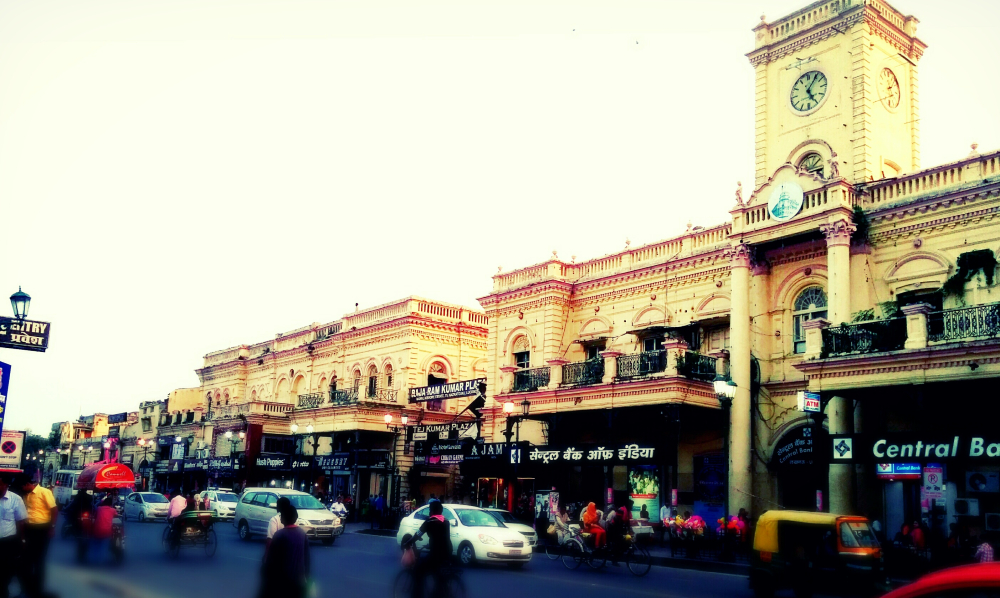
Hazratganj was modeled after the Champs-Élysées in Paris and Oxford Street in London. (Picture Credits: Wikimedia Commons)
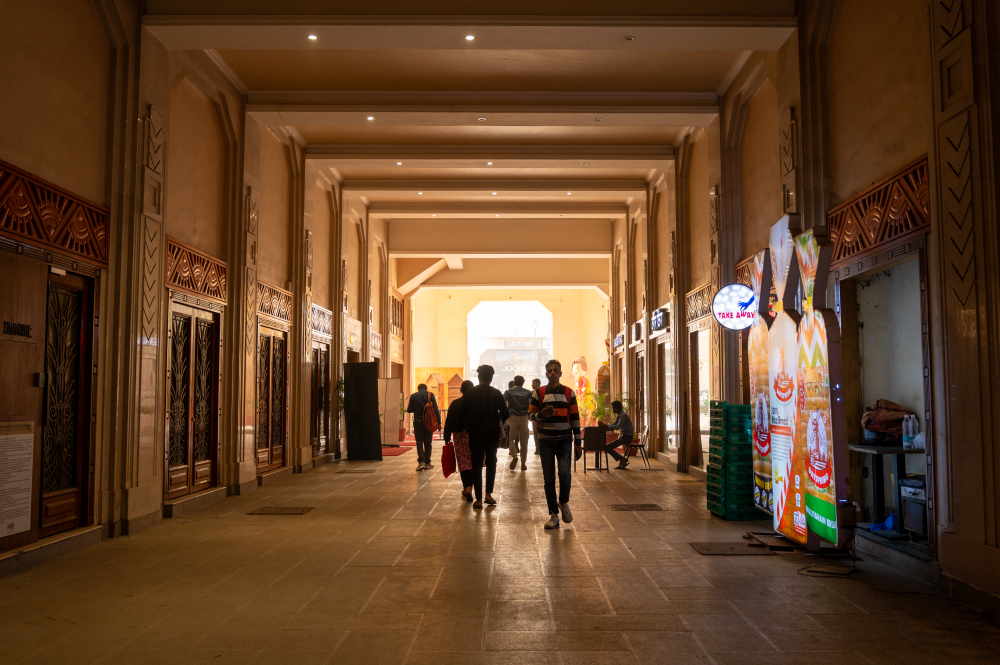
Sahu Cinema in Hazratganj. (Picture Credits: Monis Khan)
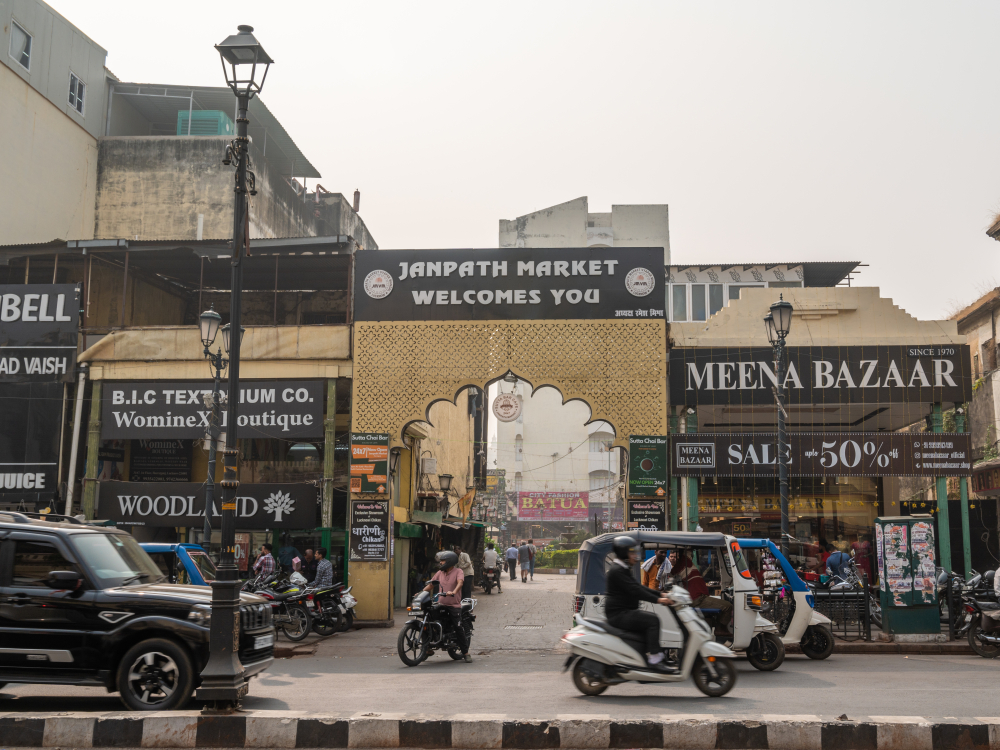
Janpath Market in Hazratganj. (Picture Credits: Monis Khan)
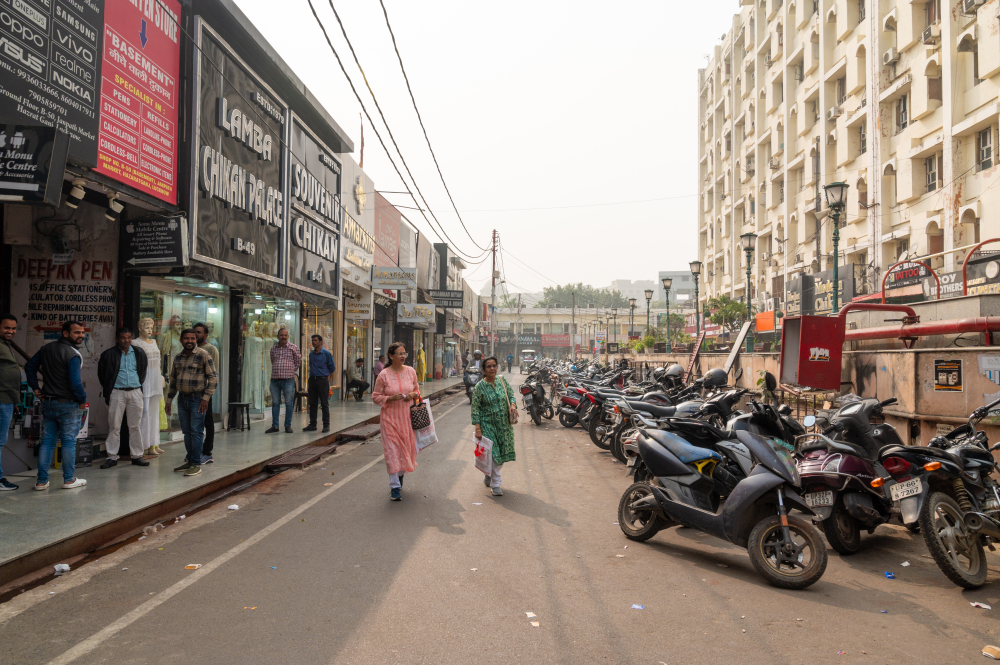
Janpath Market in Hazratganj. (Picture Credits: Monis Khan)
Today, Hazratganj is a vibrant commercial centre where old and new worlds meet. Its Indo-Saracenic and Art Deco facades are protected by local regulations, ensuring architectural uniformity in cream and pink hues. The market boasts luxury boutiques, major consumer brands and historic establishments, making a stroll down its lanes the quintessential Lucknow experience.
As the city expanded into a mini-metro, new commercial hubs emerged to meet modern needs. Markets like Bhoothnath, Gole Market, Kapurthala and Patrakar Puram have developed over the last four to five decades, serving as essential hubs for daily life. Weekly markets, which appear in different localities on designated days, supplement these permanent bazaars. Their lower prices make them accessible to the working class while providing a lively shopping experience for families.
Where Tradition Meets Change
While Lucknow’s historic bazaars remain central to its social fabric, newer boutique spaces blend tradition with modern retail. Sanatkada, located in Qaisarbagh, is one such initiative. Founded by Madhavi Kukreja, the store is an offshoot of the Mahindra Sanatkada Lucknow Festival, a vibrant crafts bazaar held every February. Realising the demand for year-round access to traditional crafts, Kukreja established Sanatkada as a permanent space to showcase Awadhi artistry. With an attached museum and restaurant, it offers a glimpse into Lucknow’s past.
Meanwhile, annual festivals keep Lucknow’s bazaars vibrant. During Holi, Aminabad overflows with papads, achaar and gulal; Diwali brings chivda, batasha and clay figurines. No matter the occasion, the markets remain at the heart of celebrations.
Lucknow’s bazaars are more than just shopping destinations—they are living, breathing testament to the city’s heritage, where history and commerce intersect every day.
This essay has been created as part of Sahapedia's My City My Heritage project, supported by the InterGlobe Foundation (IGF).
